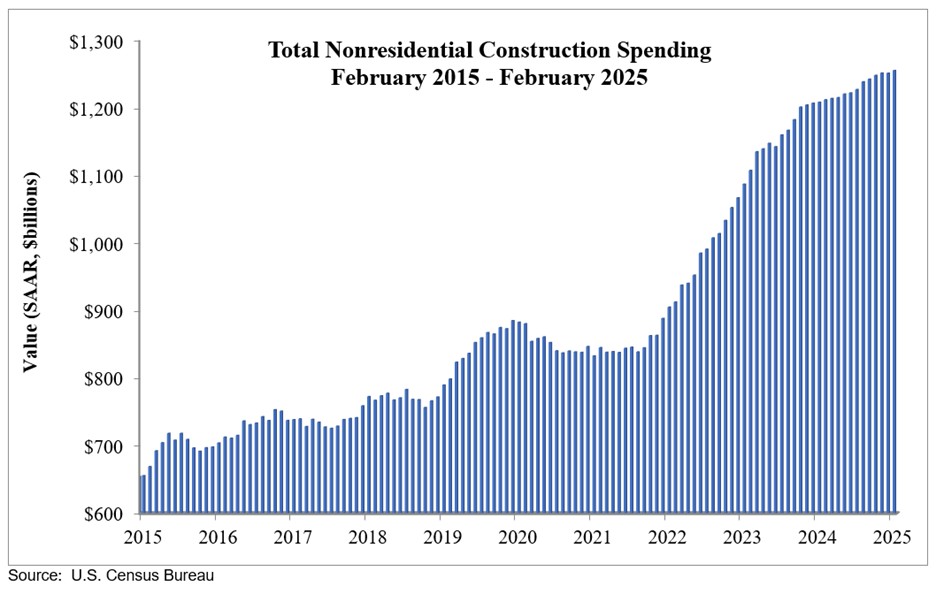Construction Spending Up In February Rates of Hires, Job Openings Slump
Construction spending increased 0.7% from January to February, even as contractors kept hiring and job opening rates remained at low levels.
 |
Both the Associated General Contractors of America and the Associated Builders and Contractors have expressed wariness of the slow down in hiring as demand for construction appears to be cooling.
“Construction spending rebounded in February, following widespread severe weather that may have slowed projects in January,” said, Ken Simonson, AGC chief economist. “Investment remains positive compared to a year ago but the growth rate for all major categories has cooled, while contractors have trimmed hiring and slashed job openings.”
Spending totaled $2.20 trillion at a seasonally adjusted annual rate in February. The total was 0.7% higher than the January rate but only 2.9% above the February 2024 level. Simonson noted that year-over-year growth rates in January (2.7%) and February were the slowest since 2019.
Private residential construction climbed 1.3% for the month, led by a 2.0% increase in improvements to owner-occupied homes and a 1.0% rise in single-family homebuilding. Spending rose 2.0% year-over-year, a slowdown from the 7.9% gain from February 2023 to February 2024.
National nonresidential construction spending increased 0.3% in February, according to analysis of data recently released by the U.S. Census Bureau. On a seasonally adjusted annualized basis, nonresidential spending totaled $1.255 trillion.
“Nonresidential spending rebounded in February, rising to the highest level on record,” said Anirban Basu, ABC chief economist. “A surge in highway and street spending accounted for more than 40% of the monthly increase, and public sector nonresidential spending is now up more than 6% on a year-over-year basis.”
Unfortunately, private sector spending has not kept pace and is up just 2.5% since last February, a rate of increase slower than economywide inflation.
Spending was up on a monthly basis in 9 of the 16 non-residential subcategories
Private nonresidential spending increased 0.4%, The year-over-year increase totaled 2.5%, down from 9.3% a year earlier, and slower than the economywide inflation.
Public nonresidential construction spending was up 0.2% in February and rose 6.0% from February 2024. A year earlier, public construction jumped 14.0% from the February 2023 total.
“The mix of high interest rates, tight lending standards and unprecedented uncertainty regarding trade policy will continue to weigh on private sector construction in the coming months,” Basu said. “Despite these ongoing headwinds and the expectation that materials prices will rise as tariffs are implemented, contractors remain optimistic about their prospects over the next six months.”
A separate recent government report showed that the number of workers hired by construction firms in February totaled 354,000, seasonally adjusted, a decline of 20,000 or 5.3% from a year earlier.
“Construction industry hiring continued to pick up in February, accelerating to the fastest rate since the first half of 2024,” Basu said. “However, industrywide job openings remain subdued compared to this time last year. Still, there are signs that construction workers retain outsized leverage compared to their employers. Contractors remain reluctant to lay off workers, while construction workers quit their jobs at the fastest pace since last May.
The number of job openings on the last day of February totaled 264,000, a drop of 165,000 or 38% from a year earlier, while the job openings rate fell to 3.1%, the lowest February rate since 2018.
Simonson said these figures show contractors expect to need fewer workers in the near future, a sign that spending may slow further.
















